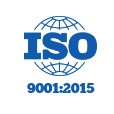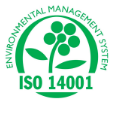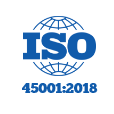 (1)_1665735976.jpg)
Project management is a thrilling job, you get to plan, organise, manage and implement ideas into actions. It is a risky job as well considering the factors like feasibility, viability and availability of resources. Hence one of the tasks of a project management consultant is to conduct a feasibility study and report the conclusions into a feasibility study report.
In this article we are here to guide you step by step, in detail, how to write an efficient feasibility report. It is one of the most important steps towards a small business consulting process as the proposed plan cannot be carried out if the feasibility study report has any deviations or inconsistencies.
First and foremost let’s get you acquainted, very briefly, about what is a feasibility study.
What is a Feasibility Study?
A feasibility study, simply put, is the evaluation of a proposed plan or project for its practicality and feasibility. This means, taking into consideration, factors like viability, technical, legal and economic profitability. A feasibility study is a pre requisite so as the limited resources available for the project to be delivered aren’t wasted.
Sometimes a project isn’t doable for various reasons such as, unavailability of the required resources. Other times the project isn’t profitable or is barely able to even cover the costs incurred. In such a situation a feasibility study is absolutely useful. A project management consultant can be of great help to your small business to get an accurate feasibility study done.
You must be wondering what a feasibility study report is and how it is prepared, but before diving into that let’s first understand why exactly do you need a feasibility study, is it that necessary and how can your business benefit from it.
How can a feasibility study report make your small business consulting process a success?
Starting a project is a huge task and you should make sure that the efforts, the time commitments and the budget allocated for the project are best utilised. An expert will be able to provide you with valuable information so that you can make an informed decision before you start your small business consulting process.
The report,as the reference point, can avoid the business owners and other stakeholders to indulge into any tricky business situations before getting started with the proposed project by proper calculations and predictions. There can be sudden change of plans, or the consultant could figure out a better approach towards the goals and foresee challenges during conducting the feasibility study. Hence, a feasibility study report is a must have!
Apart from the above mentioned points, the following aspects can be benefitted as well :
-
Chalking out a proper roadmap
-
Identification of reasons to take up the project
-
Gathering enough information to make a “go/ no go”decision,
-
Align the stakeholders focus,
-
Better and effective approach towards the project,
-
Identification of future arising hurdles,
-
Facilitate decision making process,
-
Increase the success rate by taking all angles into consideration,
-
And finally if any internal or external constraints are present, such as technical, legal, political, social, environmental or ethical, a solution can be devised.
A detailed guide to writing a well structured and coherent feasibility study report.
The results of the feasibility study conducted by your consultant is summarised into a feasibility study report which basically outlines the following factors :
-
Execution of the blueprint
-
Marketplace for the goods and/or service
-
Staffing/ Human resources
-
Financial backing
-
Marketing approach
-
Deadlines
-
Other recommendations based on the study
Finally, let’s get straight into the “how” of writing the feasibility study report which is the starting point and the deciding factor of the small business consulting process. There are broadly five steps involved in writing a feasibility study report.
Start by describing the project : As the very first step, you describe the project at hand. You highlight the “what”, “why” and “how” of the project. For example, your project could be to increase sales of your business, so you’d proceed by mentioning,
“The project is aimed at business development and increasing sales to improve profit margin and generate additional revenue.”
Figuring out possible solutions and listing them: In the second step, you conduct an in-depth analysis of the project problem and conduct solution analysis. After possible solutions are figured out, the consultant will note down the proposed alternatives. For the problem mentioned previously, few possible solutions could be :
-
Diversifying the business product/ service line
-
Merging of businesses
-
Taking up new ventures
-
Laying of employees, to reduce costs
-
Cut in consumer retention costs
-
Taking the business to the online platform
Listing the evaluation criterion for the proposed solutions : The third step is about analysing and evaluating each and every solution subject to the criterion set. You will now weigh your solutions against the evaluation aspects. The criterions, for example, for the above problem could be :
-
What business lines the business is currently operating
-
Cost of adding new business line
-
Technical support to take business virtually
-
Labour laws and employability contract
-
Industry trends
-
Revenue generated if subjected to merger
Proposing the best and most feasible solution : The fourth step towards writing a feasibility study report is to reach the best possible solution. After brainstorming with your team, stakeholders and other parties involved; it’s time to reach a conclusive solution and give an explanation for choosing that particular alternative.
For example, “Based on the potential alternatives proposed, we have come to the conclusion that the most appropriate and feasible solution for both the project and the future growth of the company is to introduce the business to the online platform and improve the social media presence of the business, to stay relevant and attract consumers in this present time.”
Concluding statement : The fifth and the last step is to write down a concluding statement. Start by mentioning the project description, followed by the chosen solutions and mentioning the exact reason to shortlist that particular alternative. A concluding statement in the feasibility report could look like :
“The project’s aim was to improve the profit margins and increase the revenue generated. We have come to the conclusion that introducing the business online, creating a website and indulging into social media marketing for the business will be the most feasible solution. This will not only improve the sales and profits, but increase the customer base of the business and reach wider sections of people.”
You must have noticed that it requires good understanding, professionalism, accuracy and time to conduct a feasibility study and write a report after that. A small business consulting process is quite extensive and requires utmost precision. Getting a professional consultant by your side makes the task less burdensome and manageable. For writing a feasibility study report, you can reach out to our company, Kamtech, which holds a reputation and expertise in the project management consultation field. Our experienced and expert consultants are at your disposal to provide you assistance in each and every step to guide you through.








.png)